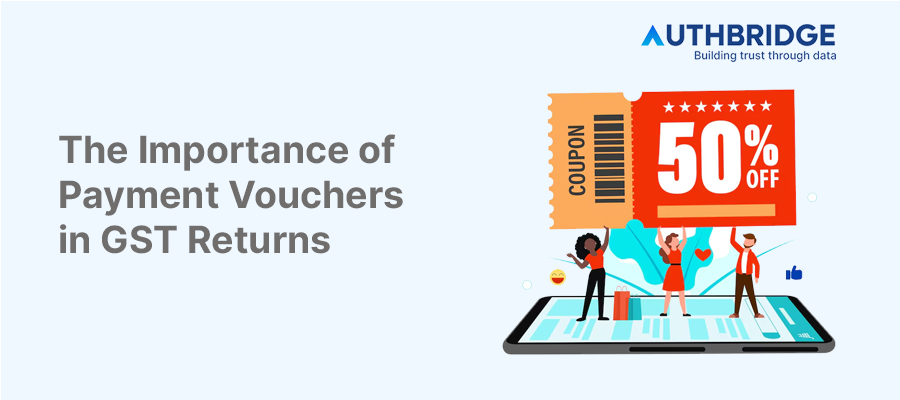The Importance Of Payment Vouchers In GST Returns

Overview of Reverse Charge Mechanism (RCM) in GST
Definition and Purpose
The Reverse Charge Mechanism (RCM) is a pivotal feature within the GST framework, shifting the responsibility of tax payment from the supplier to the recipient of goods or services. This mechanism is designed to enhance tax compliance and collection, particularly in cases where the supplier is not registered under GST or is providing specific services or goods that fall under RCM as per GST law.
Applicability and Scope
RCM applies to both goods and services as specified by GST law, including imports and specific categories where the government deems it necessary to prevent tax evasion. The scope of RCM is broad, covering unregistered dealers, specific services like legal and consulting, and certain goods specified by the GST council. It plays a critical role in ensuring that tax liabilities are met even when the supplier is outside the traditional tax net, thereby broadening the tax base and ensuring that the government's revenue collection targets are met.
This mechanism is particularly important for regulating transactions where the risk of non-compliance is high, ensuring that the government is able to collect GST from sectors that are otherwise hard to monitor. The RCM fosters an environment where the onus of compliance is on entities that are better positioned to fulfill these obligations, thereby streamlining tax administration and reducing evasion.
Payment Voucher under RCM
Concept and Necessity
Payment vouchers are critical in the GST framework, especially under the Reverse Charge Mechanism (RCM), where the tax payment responsibility shifts from the supplier to the recipient. These vouchers are essential for documenting transactions where the recipient is liable to pay GST, ensuring transparency and compliance. They act as a bridge for tax reporting, allowing businesses to accurately reflect their tax liabilities and input tax credit entitlements.
Contents and Format
A payment voucher must include specific details to comply with GST regulations:
- The date of its issue
- A consecutive serial number, not exceeding sixteen characters
- The name, address, and Goods and Services Tax Identification Number (GSTIN) of the recipient
- The description of goods or services
- The amount paid
- The rate of tax (CGST, SGST, IGST, UTGST, and cess)
- The signature of the supplier or his authorized representative
This structured format ensures that all necessary information for tax processing and audit purposes is captured.
Legal Mandate and Compliance
Under the GST law, the issuance of payment vouchers is a legal requirement for transactions under RCM. This mandate is outlined in the GST rules, which specify the documentation and procedural requirements for transactions where the reverse charge applies. Compliance with these requirements is crucial for avoiding penalties and ensuring that input tax credits are correctly claimed and utilized.
Preparation of Payment Voucher under RCM
Detailed Steps
The preparation of a payment voucher under RCM involves several steps, starting from identifying transactions subject to reverse charge to recording these transactions in the GST returns. It includes:
- Identifying the supply of goods or services that falls under RCM.
- Calculating the applicable GST based on the current rates.
- Generating a payment voucher that includes all required information.
- Ensuring the voucher is signed and dated correctly.
Required Information and Documentation
Before preparing a payment voucher, it's important to gather all necessary information, including:
- Details of the supplier and recipient (name, address, GSTIN)
- Description of goods or services supplied
- Total amount paid and the GST rate applicable
This information ensures the voucher accurately reflects the transaction and complies with GST requirements.
Digital Signature and Authentication
For digital compliance and to ensure authenticity, payment vouchers should be authenticated with a digital signature by the supplier or their authorized representative. This step is crucial for validating the document in digital records and for electronic filing purposes.
Importance of Payment Voucher in GST Returns
Evidence of Transaction
Payment vouchers serve as crucial evidence of transactions under RCM, providing a documented trail for both suppliers and recipients. This documentation is vital for accurate tax filing and auditing processes, ensuring that all transactions are accounted for and properly taxed.
Impact on Tax Liability and ITC
These vouchers directly impact the calculation of tax liability and the eligibility for Input Tax Credit (ITC). They ensure that taxes paid under RCM can be accurately claimed as ITC by the recipient, provided all conditions for credit are met. This mechanism helps in the effective and efficient utilization of tax credits, reducing the overall tax burden on businesses.
Reconciliation and Compliance
The detailed recording and maintenance of payment vouchers facilitate the reconciliation of transactions during the filing of GST returns. This process helps in identifying discrepancies between recorded transactions and filed returns, ensuring compliance with tax laws and minimizing the risk of penalties.
Compliance and Best Practices
Record-Keeping and Documentation
Maintaining meticulous records of payment vouchers is essential for compliance and audit readiness. Businesses should establish systematic record-keeping practices to ensure all vouchers are accessible and organized.
Software Solutions for Simplification
Leveraging software solutions can greatly simplify the creation, management, and filing of payment vouchers. Many GST software platforms offer automated tools for generating and storing payment vouchers, reducing manual errors and saving time.
Avoiding Common Errors
To minimize errors in payment vouchers, businesses should:
- Regularly update their knowledge of GST rates and regulations.
- Ensure accurate and complete information is provided in each voucher.
- Utilize software solutions for accuracy and efficiency.
- Conduct regular reviews and audits of their vouchers and GST filings.
This approach helps in avoiding common pitfalls and ensures smooth compliance with GST regulations.
Category

Abhinandan Banerjee
(Associate Manager - Marketing)
Abhinandan is a dynamic Product and Content Marketer, boasting over seven years of experience in crafting impactful marketing strategies across diverse environments. Known for his strategic insights, he propels digital growth and boosts brand visibility by transforming complex ideas into compelling content that inspires action.



